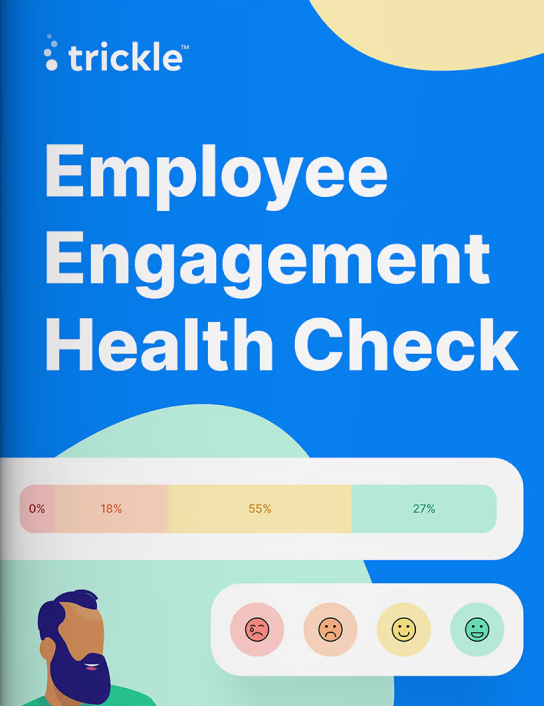How well does your company engage its employees?
Take your health check and find out.


Originally posted 29th March 2022, adapted 21st August 2023.
Organisational change can have a massive impact on a company and its people. However, figures suggest that nearly 70% of all organisational change initiatives fail in the UK. Why? Leaders often flounder in an alphabet soup of change methods, distracted by conflicting advice and financial targets. Keeping employees informed gets moved to the bottom of their list of priorities.
Given that people are what drive business success, providing them with what they need to adapt through organisational change — whether that’s opening new communication channels or offering staff training — will strengthen their resilience and boosts the resilience of the company as a whole.
The HR team can be both the drivers and champions of organisational change programmes. But recognising the need for change and knowing how to make them are two different skills.
Adapting strategies is key — but where to begin? It all starts with understanding which of the four types of organisational change you’re making.
Strategic transformational changes are typically larger programmes that take place gradually and must be monitored closely with the appreciation that transformation doesn’t happen overnight.
HR teams should adjust internal structures and work closely with employees as the business changes.
There are three ways HR can make sure employees stay happy and engaged throughout the strategic transformational change.
Employees must understand that the goal of strategic transformation is to support and adapt to new strategies as opposed to fixing deficiencies. To recognise this, though, teams need to appreciate what’s in it for them and that any training that brings them up to speed on the background of the change is about investing in their and the organisation’s growth.
Technology is designed to make our lives easier, but enforcing its use can make it tricky to implement — people tend to stick with what they know as they default to new equals bad. Make sure employees know why the technology is necessary, what makes it better than previous solutions and how you are going to support them during the transition.
When an organisation changes, its company mission should evolve with it. Make sure this suits your team by asking them to submit thoughts and goals to form a mission that not only reflects the ideals of your employees but gives the organisation an identity too.
People-centric organisational change includes instituting new parental leave policies, bringing on new hires and changing team or individual roles and responsibilities.
HR must navigate people-centric organisational change in a way that keeps current employees informed and makes new ones feel supported.
Be communicative with current employees when onboarding and training new ones. Explain the reason for hiring new people: are they going to lighten the workload or fill skill gaps? As with other areas of organisational change, be ready to answer the “what’s in it for me?”- type questions and have a solid plan to avoid negative reactions.
Shaking up routines and restructuring teams can be a delicate process, so the HR team needs to have a strategy for change implementation as well as a communication plan to support it.
Structural changes to an organisation can tend to overlap with people-centric changes. Shifts in management hierarchy always have a ripple effect, causing significant changes to departmental responsibilities and expectations.
Here are two ways that HR can make a structural change as smooth as possible — especially when salary cuts, loss of benefits, downgrading in job position, job loss or relocation might be involved.
HR has a major role in ensuring organisational and structural changes are identified, developed and carried out respectfully.
Showing your capacity to change will set an example for other teams. Informing others of the changes within your department will provide insight for success. Sharing knowledge is the best way to create a company culture that encourages support from one employee to another.
Finally, remedial change is planned to remedy current situations, such as increasing efficiency, reducing burnout and retaining talent.
Remedial change can be categorised in two ways.
Unexpected personnel changes are difficult to prepare for, but damage control means acting quickly. If you are blindsided, take some time to put together a statement to manage the departure internally (and potentially externally if they are a key stakeholder). However, announcing an employee’s departure before you have answers to the inevitable questions is a recipe for disaster.
Help teams manage stress, anxiety and burnout by encouraging them to keep their wellbeing top of mind. Give employees ongoing access to advice and best practices. For example, you could develop a network of external wellbeing coaches. Managers should also encourage their team members to use the available resources.
Collaboration, engagement, recognition and wellbeing are at the heart of Trickle, keeping your employees connected and engaged during significant change and uncertainty.